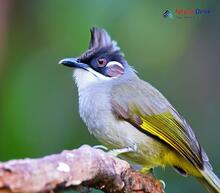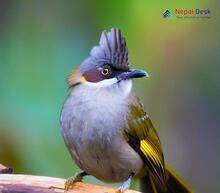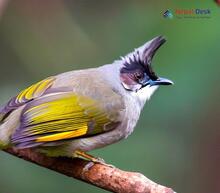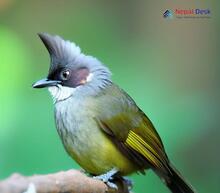Bird lovers and nature enthusiasts are constantly captivated by the plethora of bird species that populate our world. One such example is the Hemixos genus, a collection of birds frequently seen in Nepal. This article intends to offer valuable knowledge about these exceptional and intriguing birds while shedding light on aspects like their behavior, habitat, and appearance.
Introducing the Hemixos Genus
The Hemixos genus belongs to the Pycnonotidae family and has two main species – the Brown-cheeked Fulvetta (Hemixos flavala) and the Stripe-throated Bulbul (Hemixos albogularis). Both species are songbirds indigenous to Southeast Asia, including Nepal. They are distinguished by their unique vocalizations and remarkable markings.
Distinctive Features of Hemixos Genus
Birds within the Hemixos genus possess a variety of striking characteristics. The Brown-cheeked Fulvetta is a small-to-medium-sized bird featuring a notable brown cheek patch that contrasts against its greyish-white underparts. This species also exhibits a rufous cap, throat, and breast.
As indicated by its name, the Stripe-throated Bulbul showcases a prominent white stripe down its throat. Its feathers consist of greyish-green shades above, transitioning to a more yellowish-green hue below. Additionally, this bulbul bears faint black streaks on its crown and ear coverts.
Living Environment and Distribution
Both species from the Hemixos genus flourish in various habitats across Nepal. They are typically discovered in subtropical or tropical moist montane forests between 1,200 and 2,500 meters in elevation. These birds favor tree canopies or dense shrubs for nesting and finding food.
Characteristics and Eating Habits
Hemixos birds are known for being social creatures, usually seen in small, vibrant mixed-species groups while foraging. When it comes to their diet, they primarily consume insects like beetles and ants or small fruits and berries. Their feeding approach involves investigating foliage and tree bark, searching for a range of invertebrates.
Conservation Standing
At present, the Hemixos genus is considered 'Least Concern' by the IUCN Red List, suggesting a stable population. Efforts to protect their natural habitats in Nepal will contribute to maintaining these fascinating birds within the nation's diverse ecosystems.
In summary, the Hemixos genus constitutes just a single facet of Nepal's thriving bird populations. Their distinct features and captivating behavior make them an appealing subject for bird enthusiasts and nature lovers alike. As we persist in exploring and admiring the incredible array of avian species on our planet, it's essential to devote time and resources to understanding and preserving these remarkable creatures for future generations to relish.




